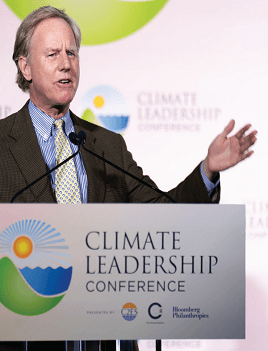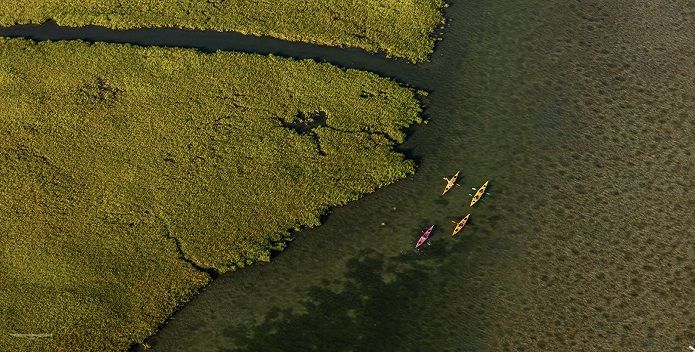In 2018, record breaking storms across the Bay watershed increased pollution loads, adding more stress to a system still dangerously out of balance. Do the storms represent a "new normal?"” Only the future will answer that, but we do know that such weather events are the characteristics of climate change as predicted by scientists for 30 years.
The damage caused by the extreme weather could have been far worse, were it not for the Bay’s increasing "resilience." This internal resilience is the result of decades of regionally coordinated, science-driven, strategies to save the Bay. The benefits, if the effort can be sustained, are huge.

Will Baker delivers the keynote address at the 2019 Climate Leadership Conference in Baltimore, Maryland.
Center for Climate and Energy Solutions
Healthy estuaries are the first line of defense for coastal areas worldwide, providing protection from climate change impacts. And the queen of the world’s estuaries, Chesapeake Bay, is strategically placed at the heart of America's mid-Atlantic region, home to nearly 20 million people.
From sponge-like marshes that absorb storm tides to underwater grass beds that buffer shorelines from heightened wave energy, a healthy estuary offers multiple ecological and economic benefits.
Estuarine systems are particularly effective at capturing and sequestering carbon. Underwater grasses and emergent marshes capture and hold carbon. Moving further upland, forested buffers along stream banks cool waters while also trapping carbon.
Examples of where one plus one can equal three include:
Sustainable agricultural practices are keeping nutrients and sediment out of rivers and streams. They are also improving soil health. Heathier soil traps more carbon.
Clean Air Act regulations reduce nitrous oxides. They improve water quality and human health while reducing heat trapping greenhouse gases. Air emissions contribute 30 percent of all nitrogen pollution to the Bay.
Oyster reefs filter the water (up to 50 gallons per adult oyster), provide superb habitat for multiple Bay species, support jobs and Bay culture, all while providing invaluable buffering to shoreline erosion and flooding.
Examining all the benefits estuaries provide, the importance of our work to save the Bay takes on even greater relevance. Human-induced climate change is threatening our communities, our economy, and our health. Mitigating climate change and implementing the Chesapeake Clean Water Blueprint are two sides of the same coin. Each reinforces and adds value to the other.
The Chesapeake Clean Water Blueprint is working. Experts from around the world are looking at it as a model for systemically improving water quality. But it's more than that. Saving the Bay is also a model for tackling global climate change. We must not, we will not, back down.

Issues in this Post
Chesapeake Clean Water Blueprint Agriculture Climate Change Eastern Oysters Wetlands Protection



